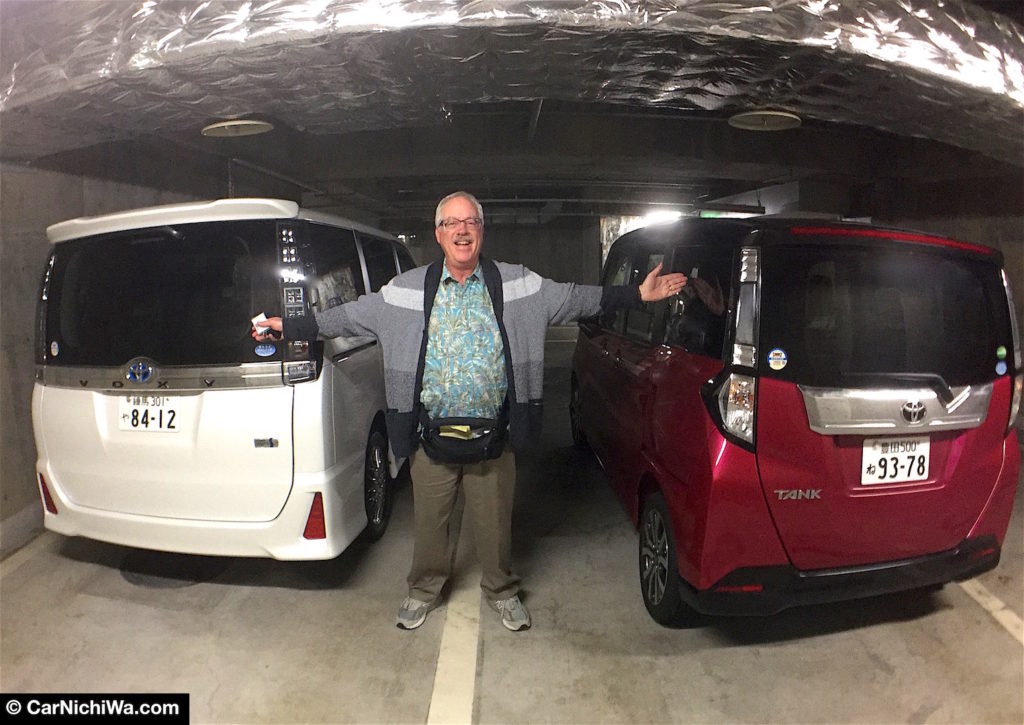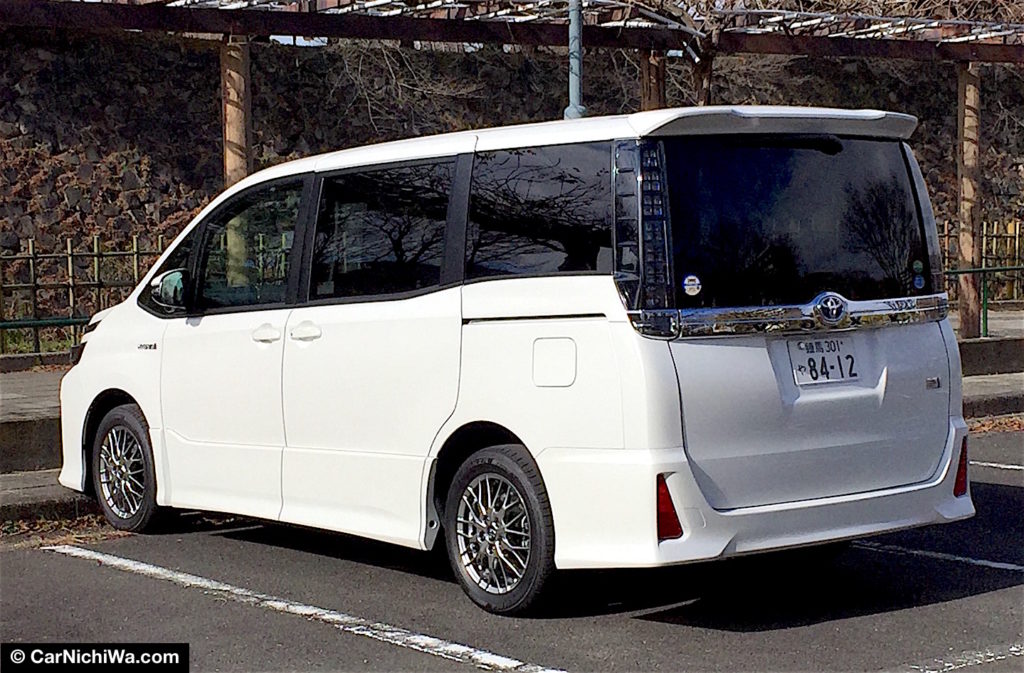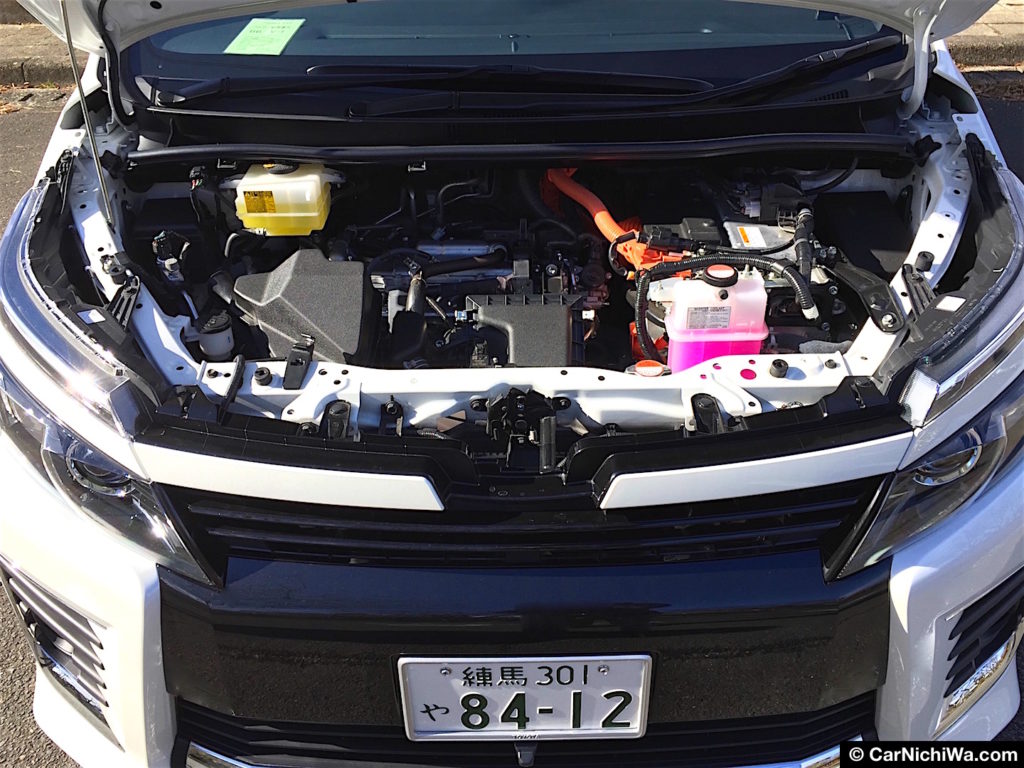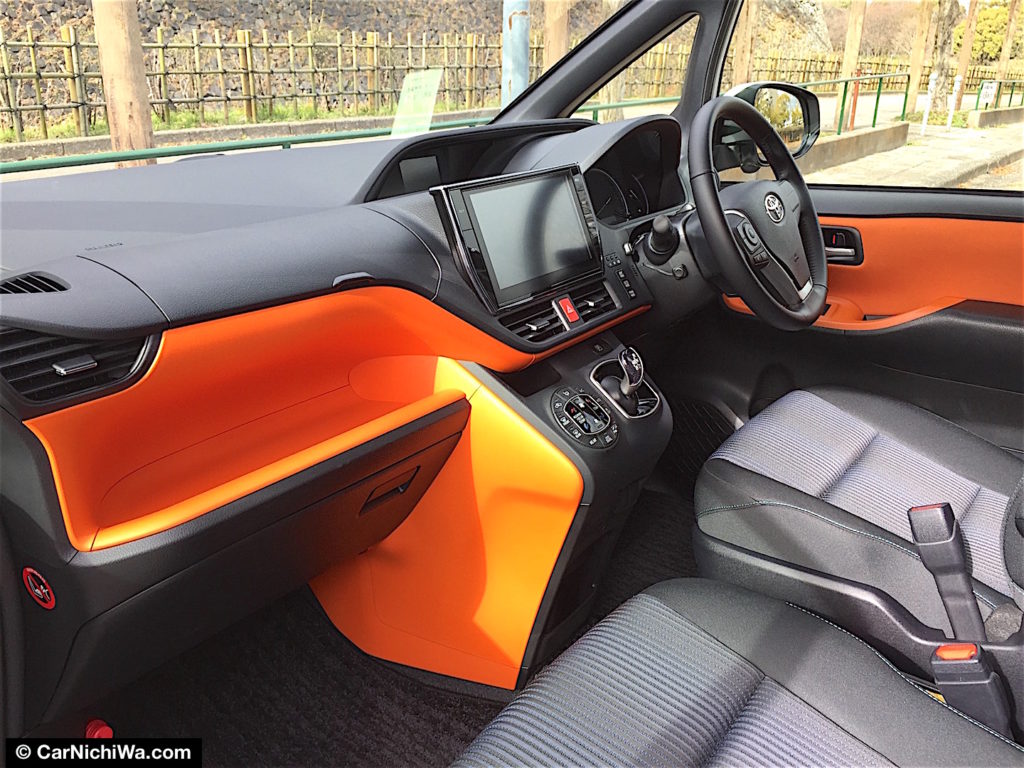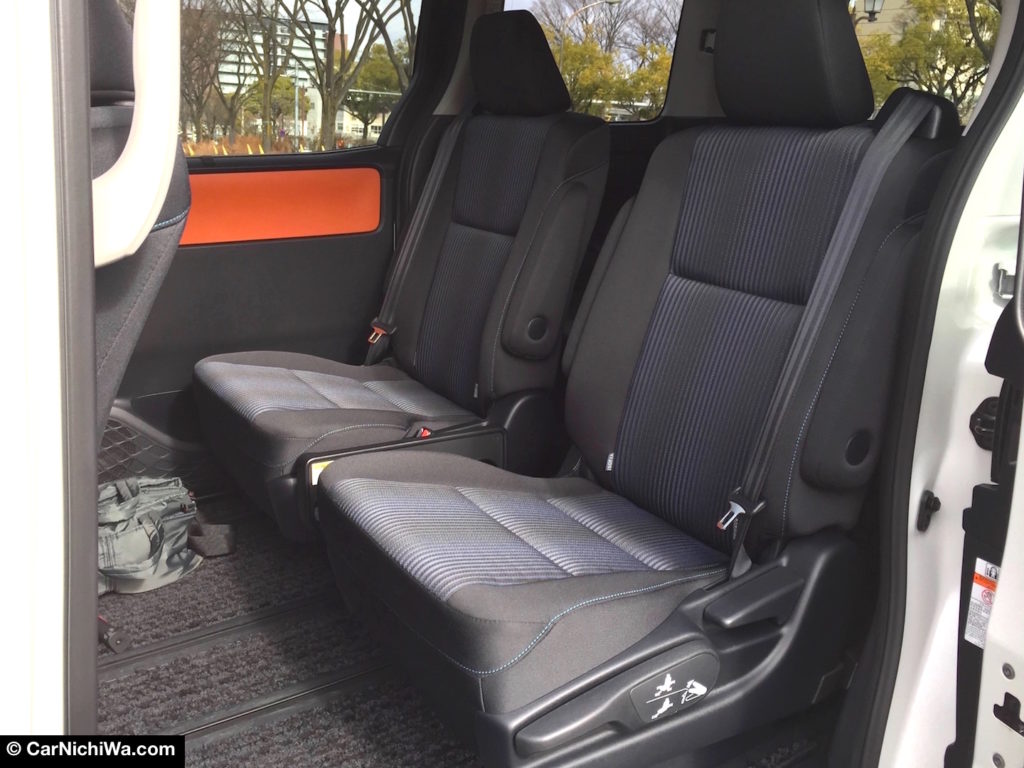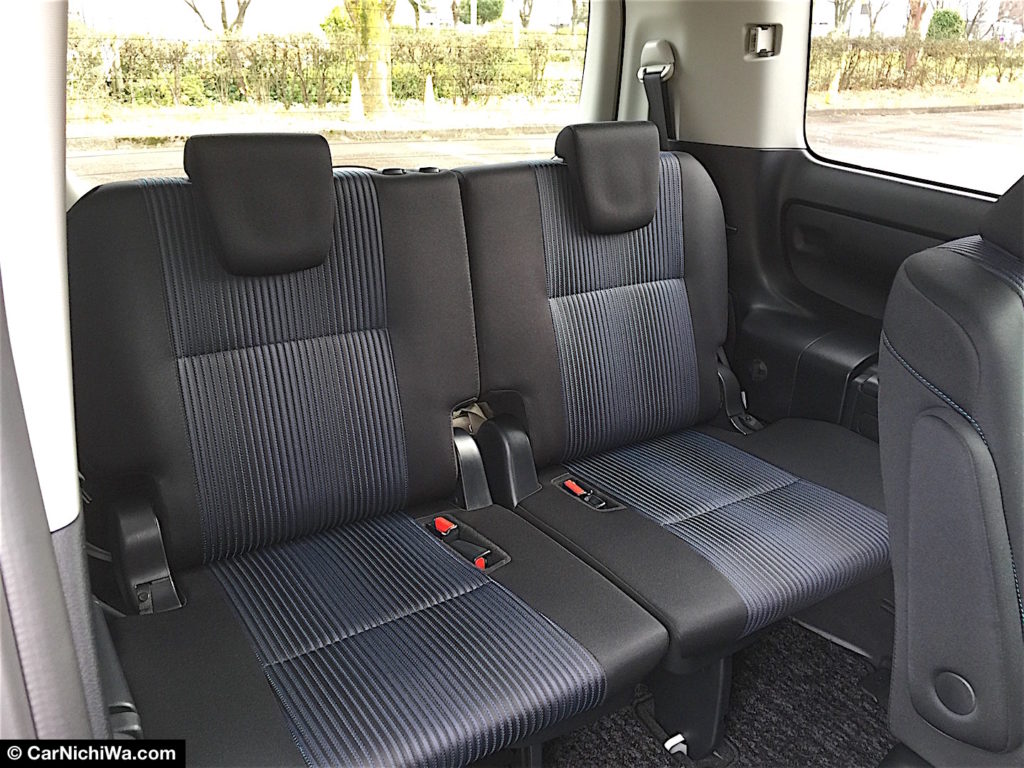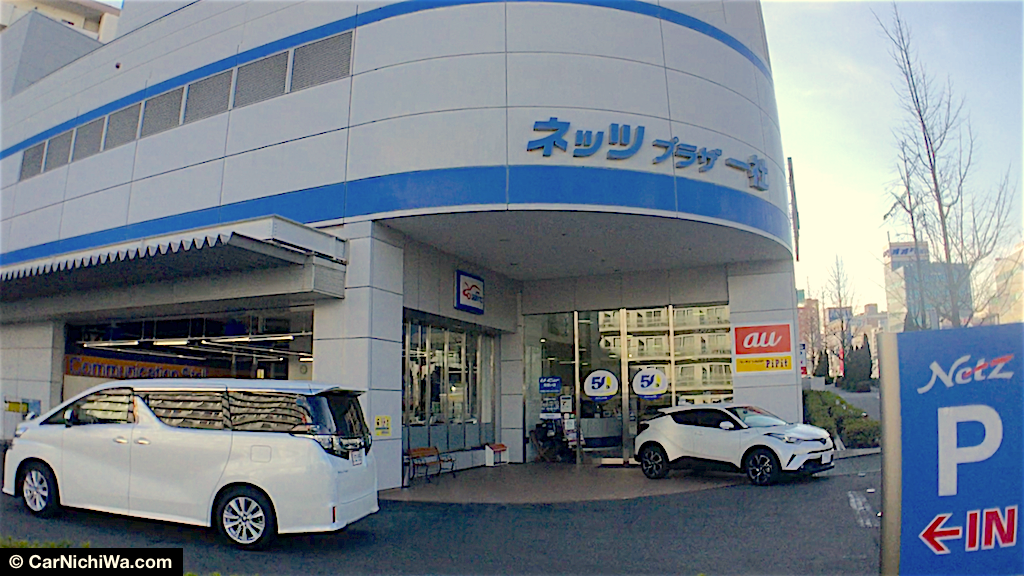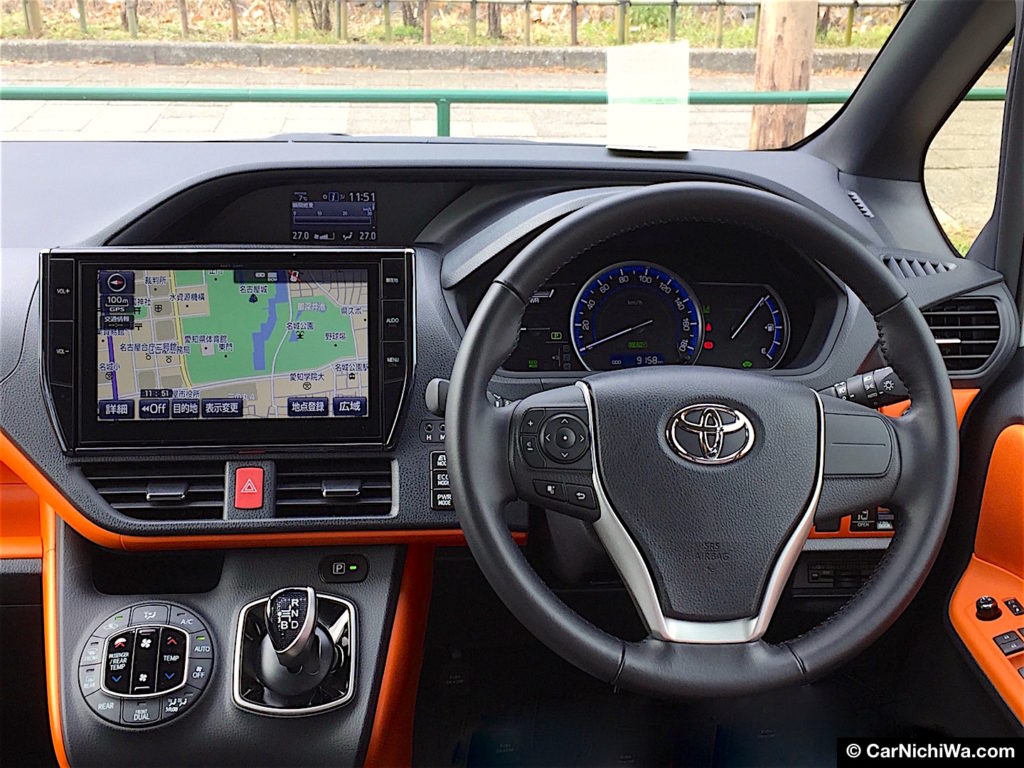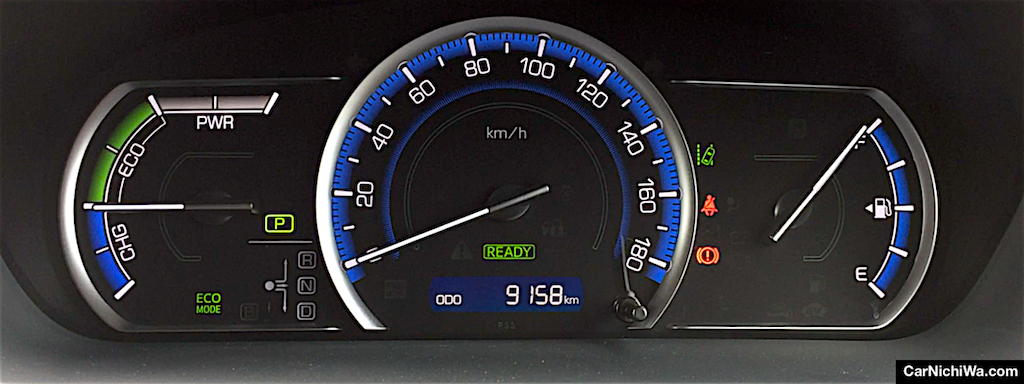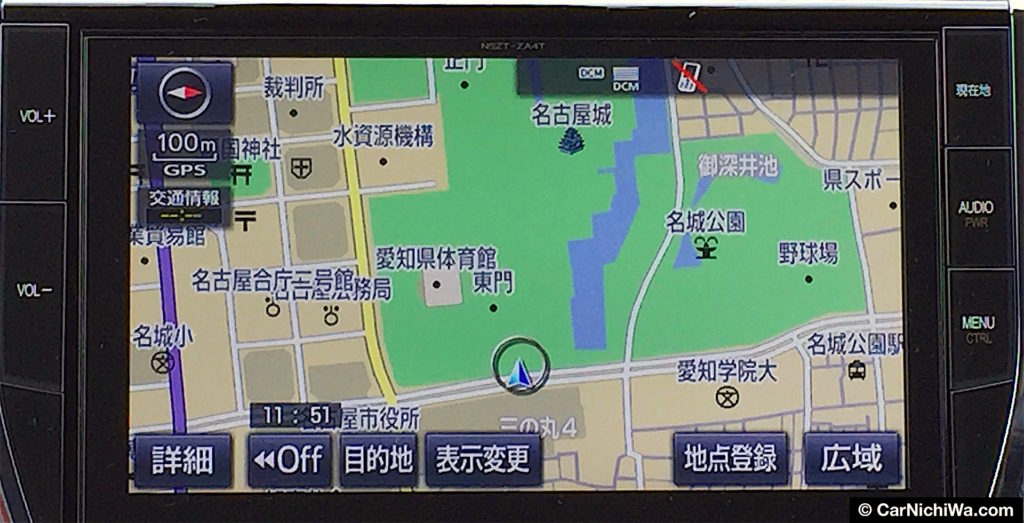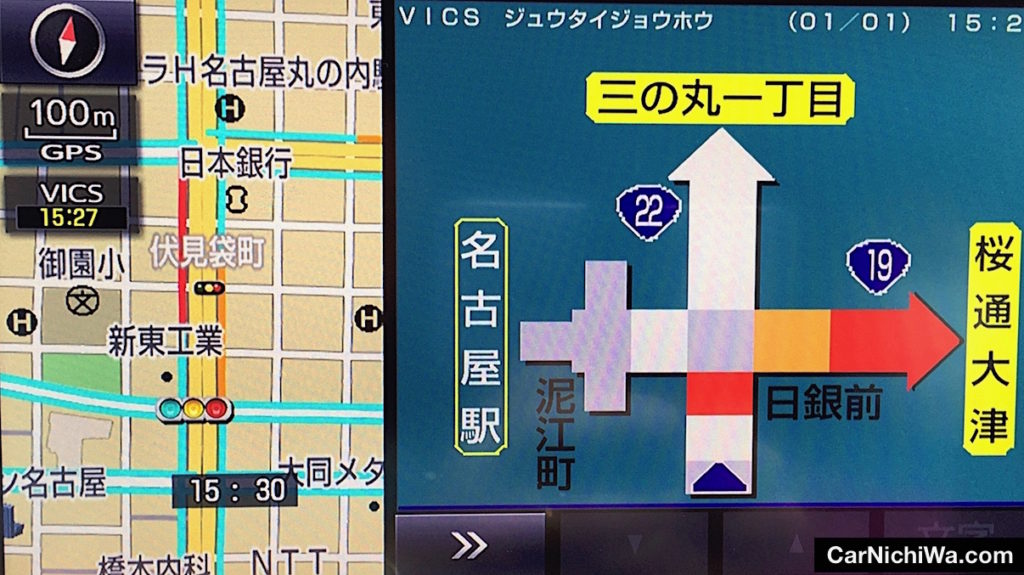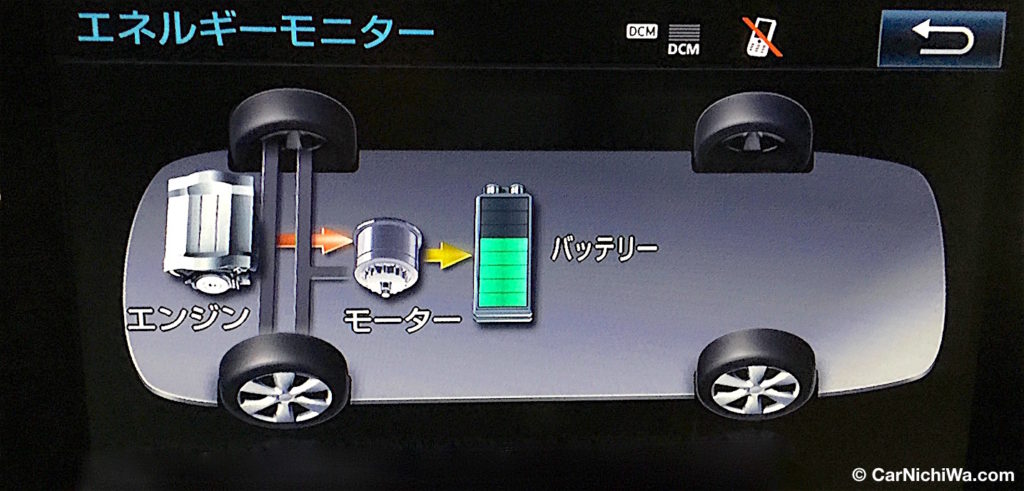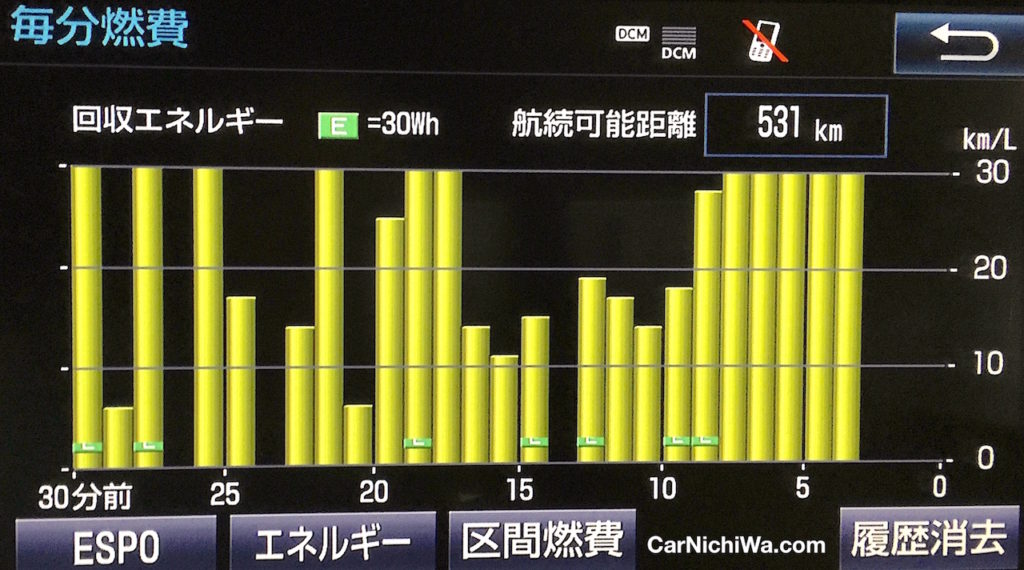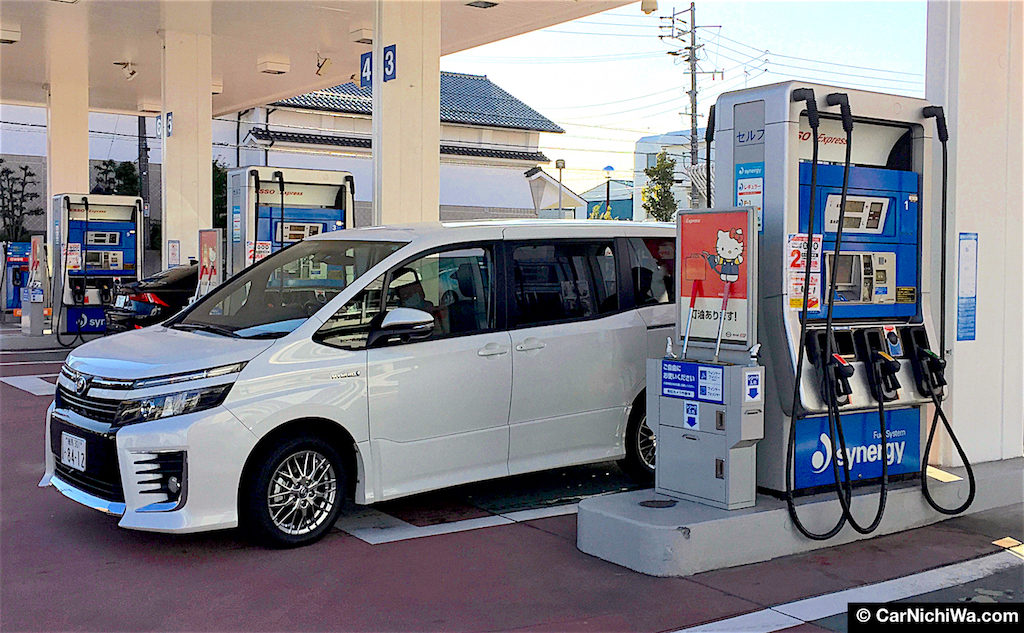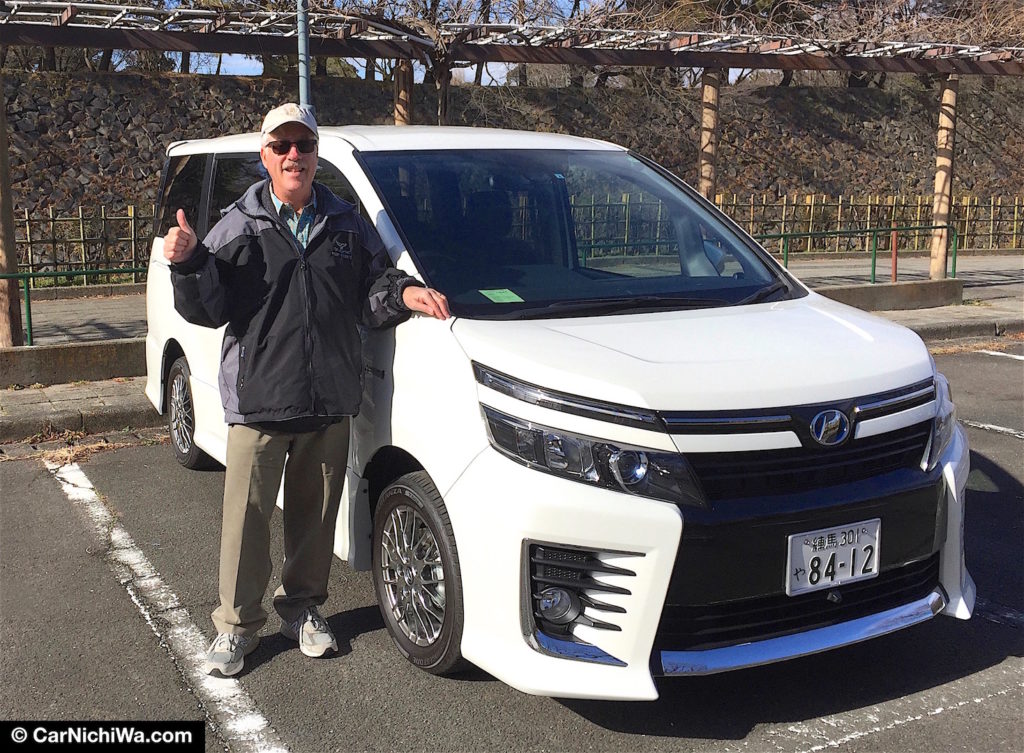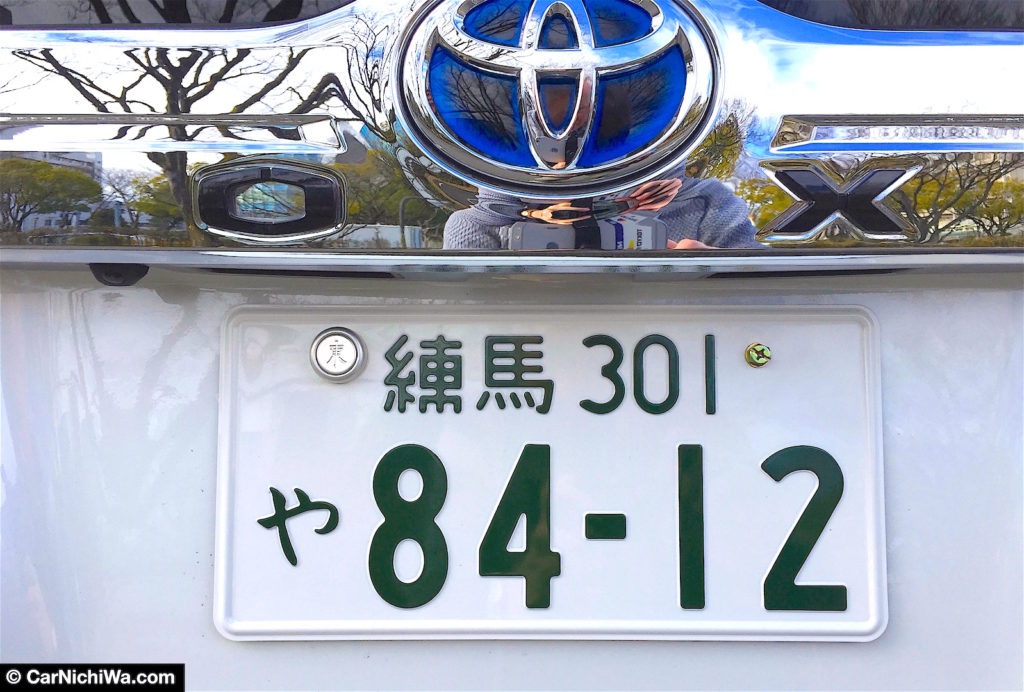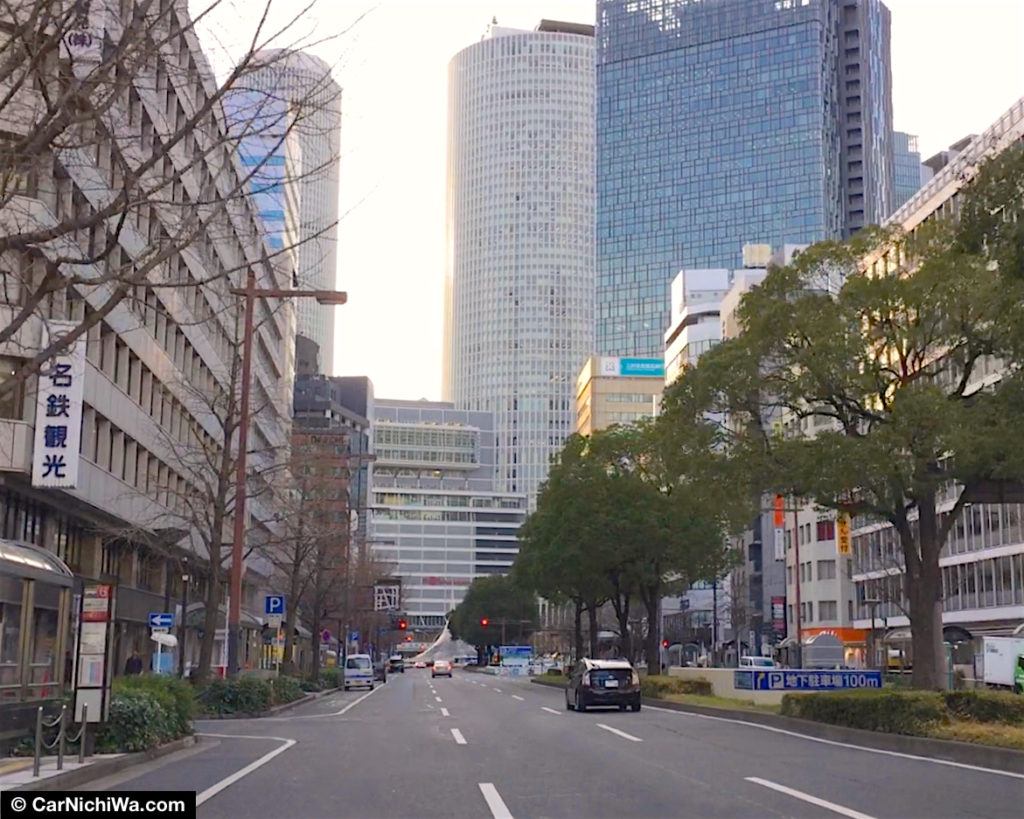By Steve Laser and Nahoko Osuka reporting from Nagoya, Japan
How popular are vans in Japan? Toyota, the country’s largest automaker, offers more than a dozen different models through its four dealer networks with names like Tank, Roomy, Alphard, Vellfire, Voxy, Noah, Esquire, Estima, Sienta, HiAce, Wish and Pixis Mega. The last time we visited Nagoya, we tested the Sienta Hybrid, a compact van that received a complete restyle.
This time we decided to ask Toyota for a press loan of the Voxy, a midsize van that’s one of Toyota’s best-selling vehicles in Japan. Now in its third generation, the Voxy was originally introduced in Japan way back in 2001. Toyota has sold more than 94,000 Voxy Hybrids since the model joined the lineup in 2014. Your faithful editor is shown above with our Voxy Hybrid test van parked next to the Toyota Tank, a new smaller van.
Toyota sells the Voxy at its Netz dealer network while its sister ship, called Noah, is available at Toyota Corolla dealers in Japan. The Voxy is designed to appeal to young families, so it’s dressed with more trendy styling and offered in a wide array of trim levels and custom treatments.
Join us for a drive around the Nagoya City area in our Voxy Hybrid test-drive video. Our contributing editor (who lives in Japan and owns a Toyota HiAce) drives while our editor runs the camera and narrates. (video © CarNichiWa.com)
Gas engine Voxys with a 2.0-liter 4-cylidner engine come in X, X “C Package,” V and ZS trims with a choice of front- or all-wheel drive. Hybrids are offered in X, V and ZS front-drive trims. Owners who want to personalize their rides can opt for dress-up items from Toyota Original Accessories, TRD and Modellista catalogs. Then, there’s the sporty G’s Voxy that’s tuned by Toyota Gazoo Racing.
Our Walkaround video takes a closer look inside, outside and under the hood of our Voxy Hybrid ZS test van. (video © CarNichiWa.com)
The current generation Voxy was treated to a full redesign a few years ago. Toyota calls Voxy’s styling “elegant and intoxicating with a unique sense of beauty.” Our test car with the uplevel ZS trim really stands out. The aggressive lower front fascia reminds us of the latest Lexus RX. By the way, the badge on the grille is reserved for Toyota models sold at the Netz dealer network.
The Voxy ZS also receives a lower body kit, revised lower rear fascia and more chrome trim. Compared to minivans offered in America, like the Toyota Sienna and Honda Odyssey, the Voxy looks taller and narrower. There’s a reason for that. Toyota says Voxy fits within the limited “five number” Japanese vehicle dimension requirements. That means it must be no longer than 4.7 m, 1.7 m wide and 2.0 m high, with an engine displacement of 2,000 cc or less.
Voxy Hybrid is powered by a 1.8-liter Atkinson cycle 4-cylinder engine evolved from the third-generation Prius, including the Toyota Hybrid System II with reduction gear. Toyota says that results in fuel economy of 23.8 km/L and CO2 emissions of 98 g/km under the MLIT JC08 test cycle. (The regular, non-hybrid Voxy is rated at 16.0 km/L with front-drive and 15.0 km/L with AWD.)
The Hybrid’s gas engine delivers 73 kW (about 98 horsepower) at 5,200 rpm with 142 N-m (104 lb.-ft.) torque at 4,000 rpm. The electric motor puts out 60 kW (80 hp) and 207 N-m (152 lb.-ft.) torque with combined output at 100 kW (134 hp). That’s pretty close to the current Prius hybrid (not the plug-in). For efficient packaging, Voxy’s Ni-MH battery pack is mounted under the front seats.
We really liked the color combo of our Voxy ZS Hybrid’s interior with its bright orange trim throughout the cabin. Toyota says materials and colors have been coordinated to create a sense of comfort that’s reminiscent of a modern (trendy) living space. Hybrid V and X trims are more subdued with mostly dark blue and black hues.
Second-row seats on our tester include ultra-long sliding tracks (810 mm or about 32 inches) in the floor for easy access to the third row. This flexible design allows different sizes of cargo to be transported inside the cabin. The second-row also reclines and can make into a bed, of sorts, when positioned next to the third row.
One-touch folding third-row seats can also be folded up to the side walls and stored. In this mode there appears to be enough space to tote two bicycles side-by-side. We found all three rows of seats comfortable with excellent headroom and ample space to stretch out.
Access to the cabin is easy thanks to the big sliding doors on both sides and a large swing-up tailgate. Our tester was fitted with optional power sliding doors that can be controlled using buttons on the keyfob or one-touch switches on the door handles.
Toyota offers Welcab specially equipped vehicles with factory installed features for special needs users. We stopped by this Netz dealer in Nagoya to check out a Voxy Welcab model on the showroom floor equipped with a wheelchair ramp (see our test-drive video).
Voxy’s outward visibility is excellent thanks to the boxy design and a wide, low-mounted instrument panel. Hybrids feature a nifty by-wire gear selector that appears to be shared with the Prius. Auto climate control, located on a round faceplate next to the shifter, includes adjustments for heating and cooling the front and rear portions of the cabin.
The instrument cluster is easy to read with a big speedometer (km/h), an eco gauge to the left and a gas fuel gauge. As we show in our walkaround video, EV, Eco and Power buttons allow the driver to alter vehicle response to suit their needs or just for fun. The EV mode operates on battery power alone for a short distance. Eco helps coach the driver to save fuel, while Sport delivers more sporty response from the powertrain.
The 10-inch T-Connect Navi screen on our tester can be operated via the touchscreen, including pinching and swiping, or by voice. This dealer-installed option is the largest screen available.
Be sure to see our videos with screen demos including a look at the fantastic multi-angle full circumference monitor. After pressing the vehicle’s push-button start, a super wide-angle view appears on the screen and spins like a video game.
High-tech goodies abound including support for Japan’s Intelligent Transportation System (ITS) and the VICS (Vehicle Information and Communications) System. T-Connect allows the Voxy to receive real-time road traffic information and display it on a split-screen as we drive. Color codes (with different interpretation for regular roads and inner- and inter-city expressways) show red for heavy congestion and orange for a traffic jam. Green indicates all-clear conditions.
T-Connect offers an interactive voice response service called “Agent” to provide information like voice guidance on relevant route traffic accidents, congestion, weather and road conditions and can even recommend gas stations along the way. In addition, users can download compatible apps to their in-car navi system while in-car Wi-Fi connectivity is also included.
Just like the Prius, this hybrid monitor screen shows real-time power flow. As a full parallel hybrid, the Voxy can run on the gas engine, the electric motor or a combo of the two. It also features a regenerative braking system that transfers normally wasted energy during braking to help charge the batteries.
This screen shows our energy score in real-time and during a span of the previous 30 minutes. The range went from a fantastic 30 km/L to less than 10 km/L depending on our driving habits. We didn’t use any special driving techniques to increase mileage during our test period. Instead, we drove around the city using the van as most folks would in their daily commute, going shopping or doing other chores.
We stopped at a convenience store, went to a shopping mall, visited the fantastic Toyota Automobile Museum in nearby Nagakute, enjoyed dinner at an excellent restaurant and spent a great deal of time scouting photo locations in the busy city. We thanked the staff of Nagoya Castle for allowing us to use an empty remote parking lot for our walkaround video.
Before returning the Voxy to Toyota, we stopped at a gas station to top off the tank. It only took a few liters of regular unleaded. While Japan’s JC08 test cycle doesn’t exactly segue with the American-style EPA testing, we figured we achieved about 30 mpg during our drive. That’s pretty good for a van of this size in stop-and-go city driving. We also used the heater a lot. Nagoya had a blizzard a few days before your editor arrived from Tokyo on Shinkansen (the Bullet Train).
After a couple of days test-driving the Voxy Hybrid in Nagoya, Nagakute and Seto, we give it a big “thumbs-up.” It’s a cool-looking, remarkably refined, sophisticated, efficient and flexible van. It’s easy to see why families love it.
Our Voxy Hybrid ZS tester started with a base MSRP of ¥3,229,200 (about $28,800), adding options including White Pearl exterior paint, power sliding doors, Toyota Safety Sense C, a Cold Weather package, rear auto air conditioner, T-Connect Navi 10 with DCM package, Multi-angle Full Circumference monitor, DSRC unit supporting ITS and Navi with ETC-VICS function, and floor mats. These brought the bottom line to ¥4,002,264 (about $35,700).
While our tester sported “Nerima” license plates (an area of Tokyo near Shinjuku), it was manufactured by Toyota Auto Body Co., Ltd., at the Fujimatsu Plant in Kariya, close to Nagoya.
Sharp-eyed readers may notice that photography for our walkaround video was made in one of the parking lots for the Nagoya Castle complex, a major tourist attraction in the city, and a remarkably beautiful place to visit any time of the year.
Today’s modern castles are located in the downtown business district of Nagoya-shi (Nagoya City). The skyscrapers made our editor feel a bit homesick for Los Angeles. Nagoya has been a sister city of Los Angeles since 1959.
CarNichiWa.com thanks Toyota Motor Corporation’s Nagoya Media Group for providing the Voxy Hybrid press fleet vehicle featured in this review.
Prices, features and specifications apply to models sold in Japan and are subject to change without notice by the automaker. Prices include consumption tax but do not include recycling fees. Prices differ in Hokkaido and Okinawa.
Story, photos and videos © Copyright 2017 CarNichiWa.com
